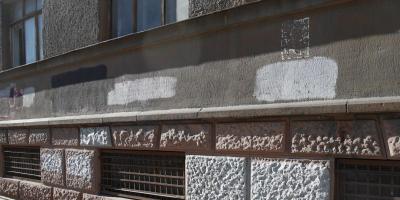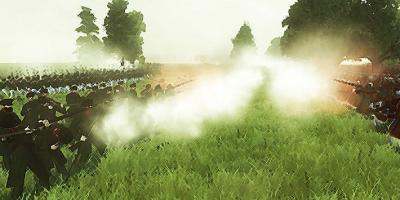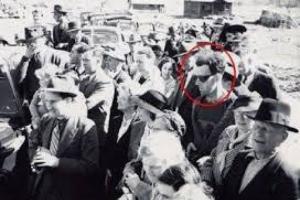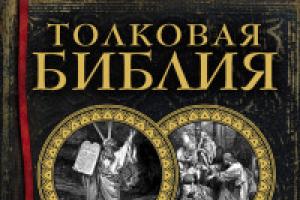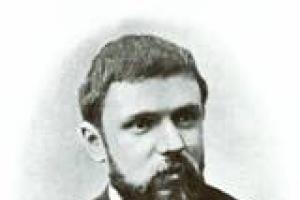Count Vladimir Fredericks - the first honorary resident of Novo-Nikolaevsk
2008 is a special year for Novosibirsk: it is 100 years since it became a full-fledged city. On December 11, 1908, the Tomsk governor sent a telegram here with the following content: “The Emperor has most deigned to agree to the application of the city regulations to Novo-Nikolaevsk in full. I am glad to announce this, confident that the city public administration, using the rights granted to it, will lead the city to further prosperity."
But, along with granting the village city rights, the issue of land use has always been particularly painful for Novo-Nikolaevsk. Land in Siberia belonged mainly to the state and the royal family. The royal lands were governed by the Cabinet of His Imperial Majesty. Novo-Nikolaevsk arose on lands that belonged to the tsar, and the population paid high rents for it. Entrepreneurs, in addition, paid for the right to trade or own industrial facilities, but felt uncomfortable knowing that they could be forced at any time to clear the leased lands of extraneous buildings. Cabinet land ownership hampered the development of the village. In 1901, for example, due to difficult rental conditions, the famous businessman Savva Morozov was unable to set up his factory in the village. One of the central streets of the city was called Kabinetskaya, now Sovetskaya. And in the Chulymsky district of the Novosibirsk region there is a village and Kabinetnoye station.
For the first time, Siberians turned to the authorities with a request to sell land in 1901, when residents of the village asked the Tomsk governor to sell them 10 thousand acres of land for 350 thousand rubles. In December 1903, Nicholas II transformed the Novo-Nikolaevsky village into a district-free city in the Tomsk province and approved the principles of allocating land to its residents. 4881 dessiatines of public land (pastures for livestock, streets, squares) were transferred free of charge, and 582 dessiatines of estate land had to be purchased. But the decision on this part of the royal decree, which was very important for the townspeople, was suspended. Only in 1907 did the Cabinet administration agree to sell the land to the city on new terms: the free area of land transferred to the city was 171 acres, and the area of land subject to redemption was 3,184 acres. The Cabinet reserved the most advantageous areas for itself. The redemption amount was equal to 600 thousand rubles, which the townspeople were obliged to pay within 20 years with payment of 4% per annum, i.e. in total it should have amounted to 1 million rubles. By 1917, half of this amount had been paid, and the revolution completely “relieved” residents of paying the debt.
The two-story brick building at 4 Obskaya Street has still been preserved; near the mouth of the Kamenka River and the former Oktyabrskaya pier, where the administration of His Majesty’s Cabinet was located. The building later housed the Oktyabrsky District Court of Novosibirsk, and now houses a branch of the Russian Academy of Entrepreneurship. It was here that advisor Ivan Ulrich and the acting Novo-Nikolaevsk city mayor, merchant Grigory Kuznetsov, signed in 1907 the “Act on the transfer to the city of Novo-Nikolaevsk for the purchase of land of the Altai District of the Department of His Majesty’s Cabinet.” Novo-Nikolaevsk, which was a refuge at the beginning of the last century adventurers, began to grow by leaps and bounds, and in a matter of years became the largest city in the eastern part of Russia.
The success of the deal was greatly facilitated by Adjutant General Baron Vladimir Borisovich Fredericks, Minister of the Imperial Household. For many years he held a post under Nicholas II that roughly corresponds to today's head of the presidential administration. He was one of the few people in the state who had free access to the Sovereign and was responsible, in particular, for the schedule of the highest audiences. Without his support, Novo-Nikolaevsk would never have become the capital of modern Siberia.
Vladimir Borisovich helped the Siberians in the future. The grateful merchants, inspired by the prospects that opened before them, initiated the election of a high official as the first honorary resident of our city. This happened in 1908. A few months later, the Tsar signed a decree granting Novo-Nikolaevsk full city status.
9 years later, 4 days after the abdication of Nicholas II, on March 6, 1917, an emergency meeting of the City Duma passed a resolution: “The first Honorary Resident of the city of Novo-Nikolaevsk, the Minister of the Court, Count Fredericks, is to be deprived of this honorary title.” The monarchist-minded New Nicholas deputies were very indignant that Fredericks, in accordance with the main functions of his official position, sealed the signature of Nicholas II on the abdication of the Throne.
On December 11, 2008, Novosibirsk celebrated its centenary as a full-fledged city. And in another 5 days it was the 180th anniversary of the birth of Vladimir Fredericks, forever associated with the history of Novosibirsk. Many historians and journalists believe that this is an excellent reason to cancel the obviously absurd resolution of the City Duma of 1917. It is simply stupid to blame the glorious count for an anti-monarchical act, because of which local deputies were offended by their first honorary resident.
The Imperial monarchists of Novo-Nikolaevsk propose to restore justice and return the honorary title to the one who helped the peripheral village to become the third city of Russia in the shortest possible time. We appeal to the Novosibirsk mayor's office and deputies of the city Council of Deputies to consider this issue. After all, whatever one may say, Count Fredericks is our man in history. The newspaper Nikolaevsky Prospekt was the first to raise this issue.
Vladimir Borisovich Fredericks
Vladimir Borisovich Fredericks (November 16/28, 1838 - July 5, 1927) - a descendant of a Swedish officer captured by the troops of Peter I. The family was introduced to baronial dignity by Catherine II. Since 1871 - adjutant wing under Emperor Alexander II. In 1875-1888 - commander of the Life Guards Cavalry Regiment, then the first brigade of the first guards cavalry division. In 1891-1893 - manager of the court stables. In 1893-1897 - Assistant Minister of the Imperial Court and Appanages with the rights of a Comrade Minister. At the same time he was the Chancellor of the Russian Imperial and Royal Orders. From 1896 - Adjutant General, from July 14, 1897 - Minister of the Imperial Household (the ministry managed the palaces and land holdings of the Romanov Dynasty). In 1900 he was promoted to cavalry general. Since 1905 - member of the State Council and commander of the Imperial Headquarters. On the day of the 300th anniversary of the House of Romanov, February 21, 1913, he was elevated to the dignity of count.
On March 2, 1917, in Pskov, he signed the Manifesto on the abdication of Nicholas II from the Throne. On March 5, at the request of the Provisional Government, he was removed from the Emperor’s residence; on March 9, in Gomel, he was arrested by railway “workers” and taken to Petrograd. Interrogated by the Extraordinary Commission of Inquiry. After some time, he was transferred to a hospital and then released due to his advanced age. After the Bolshevik revolution, he turned to the Soviet government with a request to travel abroad. Having received permission, in 1924 he and his daughter went to Finland, where he died in 1927.
Alexey Bondarenko, Senior Companion RIS-O
Novo-Nikolaevsk. November 2008
This amazing man became famous in Russia not only for his faithful service to the sovereign, but also for his charitable deeds. His estate was often visited by eminent guests, including Emperor Nicholas II.
V.B. Fredericks was an avid hunter. In Siverskaya he kept an excellent kennel. Accompanied by well-trained purebred dogs, he often went hunting in the local forests. The baron buried his beloved dead dogs in a special cemetery for animals, located in the estate park. He decorated the graves with stone slabs, accompanying them with touching inscriptions. At the beginning of the twentieth century, Fredericks founded his own menagerie, in which he kept rare animals and even a mother elephant and her calf.
At the end of the 19th century, Siverskaya became the most popular dacha area near St. Petersburg. During the summer months, about ten thousand summer residents vacationed here annually (by 1912 their number increased to 37 thousand). At first, summer residents settled in the villages of Staro-Siverskaya, Kezevo, Novo-Siverskaya, Mezhno, and later began to develop new territories located in the central part of the modern village. Before the opening of the Sestroretsk resort on the Gulf of Finland in 1898, Siverskaya was rightly called the dacha capital of Russia.
The centenary of February 1917 and the fall of the Romanov dynasty passed virtually unnoticed in St. Petersburg. The prediction of our great mystic poet came true with stunning accuracy
The year will come, Russia's black year,
When the kings crown falls...
and in the public consciousness, the year of the Russian catastrophe is still associated with Romm’s film crowd on Dvortsovaya. In November we will certainly be treated to bright and colorful shows.
Another very strange thing is that the turning point in Russian history left almost no monuments, as well as no traces in the city toponymy. Field of Mars... but Volodarsky was also buried there and many people were buried. Vosstaniya Square and Street - but everyone thinks that we are talking about October again.
It's time to show local history activity in search of traces of the “great bloodless” February Revolution. Which is what the author of these lines did. This is a story about one of her unusual monuments. And also about Count Vladimir Borisovich Fredericks (1838-1927), the last Minister of the Imperial Court of the Russian Empire. He went down in Russian history as the one who signed the manifesto on the abdication of Emperor Nicholas II from the throne (according to textbooks and Wikipedia).
PRODIGAL IMAGE OF THE WINTER STORM
Pochtamtskaya Street is located in the very center of St. Petersburg, next to St. Isaac's Cathedral, the Manege and the barracks of the Leningrad Guards. Horse regiment. At the very end of it, on the corner with Konnogvardeisky Lane, there is house No. 23/8 (photo in the title of the post). It was erected in 1936 according to the design of architect. A.I. Knyazev and B.A. Mikhailov and is, in fact, a passing example of constructivism.
The only unusual thing is the red sandstone cladding of the building's basement; they say that the stone for it was taken from the dismantled fence of the Winter Palace. 
The house looks somewhat unkempt and uncomfortable. Now it is occupied by the hostel of the St. Petersburg Post Office.
 |
 |
It clearly did not fit into the urban fabric of the 19th century. and it looks a little wild here. What does it have to do with February 1917?
Let us turn to the memoirs of Lieutenant General and Head of the Chancellery of the Ministry of the Imperial Household A.A. Mosolov “At the Court of the Last Emperor”:
“Petersburg was the only capital of the late 19th century that still had barracks in the city center. The Horse Guards barracks occupied a huge area, representing a fundamental building on three sides of a huge parade ground, on which exercises were carried out and the entire life of the regiment took place.
Just opposite, on Pochtamtskaya Street, stood a small beautiful mansion that belonged to Count Fredericks.<...>He was the first to be burned by a crowd on the opening day of the revolution - this was the first violent destruction of private property."
To clarify the location of the significant event, we will find the address of V.B. Fredericks according to the VP reference book for 1911 
The numbering of the houses here did not change, and the new building on Pochtamtskaya No. 23/8 was built exactly on the foundation of the Fredericks mansion that was destroyed in the February days. On the occasion of the first destruction of private property, it would not be a sin to hang a memorial plaque here.
“The Count was very attached to his home and never wanted to leave it. The Countess once told her husband in front of me that it would be inconvenient for the Minister of the Court not to be able to host a large reception in his own place, for lack of a suitable hall, as ministers living in government quarters arrange. Fredericks responded:
- Right. But at least you won’t have to move when I’m fired from my position, and you’ll still have friends in your five living rooms. I think that peace of mind for the future is more pleasant than fussing with arranging big receptions.
He, like all of us, could not think that in ten years none of us would be able to consider ourselves wealthy.”
What did the count's mansion look like?
You can see him in this old photo (he's on the far right). It is interesting that right there on the parade ground there are sculptures of the Dioscuri; they were moved to the entrance to the Manege building only in 1954. 
Masons on the parade ground of the Life Guards Cavalry Regiment. Photo from the studio of K. Bulla. 1900
Fredericks House, built in 1875 according to the design of architect. P.P. Schreiber, was distinguished by “forms of the most refined Renaissance.” "The facade is very good,- wrote the magazine “Zodchiy” in 1975, - It was only by decorating the attics with vases in excessive abundance that the author damaged his work, especially since these vases (Louis XVI) are already on many St. Petersburg houses.”
But what happened to him after the revolutionary defeat. 
What did the Minister of the Court, a 79-year-old sick old man, do to the revolutionaries so much? To answer this question, we must turn to his biography.
OLD GENTLEMAN
Vladimir Borisovich Fredericks was born on November 16, 1838 in St. Petersburg and was a descendant of the Swedish
an officer captured by the troops of Peter I. His grandfather was a court banker, and his father was a general. He lived a long life under 4 Russian emperors (from Nicholas I to Nicholas II). He received an excellent education and began military service as an 18-year-old youth in the Leningrad Guards. Horse regiment.
In 1871, he received the post of aide-de-camp to Emperor Alexander II. Under Alexander III, he took the position of assistant minister of the Imperial Court and Appanages. In 1897, by decree of Emperor Nicholas II, he was appointed Minister of the Imperial Court. This department, created in 1826, was outside the control of the Senate and other higher authorities and was subordinate exclusively to the emperor.
In 1900, Fredericks was promoted to cavalry general, and five years later became a member of the State Council and commander of the emperor's headquarters. From this period until March 1917, he was one of those closest to the sovereign, invariably accompanying him on trips. 
V.B. Fredericks. Hood. I.E. Repin, sketch for the painting “The Ceremonial Meeting of the State Council on May 7, 1901”
With the creation of the Imperial Russian Automobile Society (IRAO) in 1909, Fredericks was appointed its president. His high position at the sovereign's court and the full trust of the emperor ensured the great influence of IRAO on the development of motoring and sports in Russia. 
V.B. Fredericks (sitting in front, next to the driver) in Brazier's car. Behind him are his daughter Evgenia and son-in-law V.N. Voeikov
By the highest diploma dated April 10, 1916, Fredericks was awarded diamonds decorated with combined portraits of Emperors Alexander II, Alexander III and Nicholas II on the St. Andrew's ribbon in honor of the 60th anniversary of service in the Leningrad Guards. Cavalry regiment and 25 years of service in senior positions at court. The track record of his awards is impressive: Russian orders - 11, foreign orders - 49.
The royal couple loved the minister very much and called him Old Gentleman. General N.A. Epanchin wrote about V.B. Fredericks, what is he “a deeply noble man, a knight; he was not afraid of anyone and always spoke the truth, no matter whether he liked it or not.” Attitude of S.Yu. Witte was ambivalent towards him: “The most beautiful, noblest and most honest person - but that’s all. However, there is a lot of this in general, and especially in modern times...”. At the same time, Witte did not highly value the business abilities of the Minister of the Court: “Frederick was very poor in understanding matters; it was difficult for him to grasp not only reasoning, but also the simplest facts.” Nevertheless, they remained on good terms, V.B. Fredericks was the only person from the court environment who came to visit S.Yu. Witte after the assassination attempt on him in the winter of 1907.
By the time of the February Revolution, V.B. Fredericks began to suffer from memory loss. He had no influence on the emperor, but enjoyed his complete trust, about which his subordinate A. A. Mosolov wrote: “The moral loneliness that the tsar imposed on himself from a young age was all the more dangerous because Nicholas II was distrustful even of those in his immediate circle. One Count Fredericks was an exception.".
V.B. Fredericks, Minister of the Imperial Court under Nicholas II. Photo by K. Bulla. 1913
V.B. Fredericks was married to Yadviga Aloizievna Bogushevskaya, the daughter of a major general. They had two daughters: Evgenia and Emma. V.N. was married to the eldest, Evgenia. Voeikov (1868-1947), palace commandant of Emperor Nicholas II. In his book of memoirs “With the Tsar and Without the Tsar,” published in 1936 in Helsinki, he described the revolutionary destruction of his father-in-law’s house on February 27-28, 1917. In fact, its reasons were the “non-Russian” surname of the count and placement in the Horse Guards barracks soldier of the Kexholm regiment.
“The most convenient slogan for agitators of that time was to incite the crowd against German surnames, to which Count Fredericks was mistakenly included (since his surname was of Swedish origin). Having also passed him off as a German spy and traitor to our homeland, the provocateurs reached the point that on February 27, from 10 o’clock in the evening, soldiers of the Kexholm regiment began to gather near the house, look at the roof, on which there were supposedly machine guns for shooting at the people, and, finally , began shooting at the lower window, breaking through the inner shutter.
The siege of the house continued until two o'clock in the morning, in which the sick countess was lying in bed, with her were her two daughters - my wife and Countess Fredericks, with confused servants. At two o'clock the soldiers left and there was silence on the street, giving the inhabitants of the house hope that everything was over. But from 8 o'clock in the morning the next day, the street was again filled with completely undisciplined soldiers, of whom 10-15 people stood at the front door, with guns at the ready, demanding to be allowed into the house, where they supposedly had to find and take away the weapons and hidden weapons. machine guns. Under this pretext, soldiers began to enter the house in groups of 15-20 people; they were joined by some sailors, prisoners released from prison, and, finally, just passers-by from the street. As a result, Count Fredericks's house was overrun by a crowd of about a thousand people.<...>
Despite the incendiary speeches of the revolutionary speakers, the crowd at first seemed embarrassed to indulge in open robbery, seeing only defenseless women and the countess who was dying.
But that was until the moment when they burst into the wine cellar, where they fought over bottles, snatching them from each other, pushing, kicking those who had fallen. The drunks fell down immediately; the half-drunk crawled along them like big gray rats, and those still on their feet filled the entire yard. We barely managed to carry the dying countess out of the completely looted house, which the crowd eventually set on fire from all sides.”
Memoirists note the active role of the famous actor in this pogrom. He did not disdain to appropriate a couple of stuffed huge Siberian bears and subsequently boasted to guests about things from the house of Count Fredericks. The Times correspondent completes the picture with a colorful episode: the count’s daughter, weakened after illness, managed to run out of the house with her beloved dog in her arms. A drunken crowd grabbed a woman on the street, beat her, and brutally killed her dog.
The gr. himself V.B. Fredericks was arrested in early March 1917, apparently in Mogilev, and then on the personal order of A.F. Kerensky and A.I. Guchkov was taken to the Tauride Palace, where he was interrogated by investigators of the Extraordinary Investigative Commission. After which, “for lack of guilt,” he was released and spent a long time undergoing treatment in the Evangelical Hospital. Then he lived in Petrograd without a break.
In 1924, he turned to the Soviet government with a request to travel abroad. Having received permission, he and his daughter left for Finland that same year. He settled on his estate near the town of Kauniainen.
Vladimir Borisovich died on July 5, 1927 at the age of 88. He was buried in the city cemetery of Kauniainen (today it is a satellite city of Helsinki). Later, his daughter Evgenia and son-in-law V.N. were reburied there. Voeikov. This grave now contains the ashes of two Russian generals.
 |
 |
The Frederiks family grave in the Kauniainen cemetery. Photos courtesy of Nikolay Taruntaev zildoma
FALSE SIGNATURE OF COUNT FREDERICKS ON THE "ABANDABILITY" OF EMPEROR NICHOLAS II
Many have probably seen this staged drawing “The Abdication of Nicholas II.” It has been circulating on the Internet for a long time; the original, it seems, is in the State. Historical Museum. 
In the salon carriage of the Tsarsky train. Pskov 03/2/1917
From left to right gr. V.B. Fredericks, Adjutant General N.V. Ruzsky, State Duma deputies V.V. Shulgin and A.I. Guchkov, adjutant wing to Major General K.A. Naryshkin, Emperor Nicholas II.
There is a point of view that Fredericks should not be in this picture. It is presented very convincingly by the blogger nampuom_pycu
.
During the interrogation conducted by the Extraordinary Investigative Commission of the Provisional Government, Fredericks stated that he was not under the Emperor at the time of abdication; even before March 2, 1917, he went to Petrograd and was arrested. Scans of the interrogation transcript are attached there.
There were two good reasons for the Count not being with Nicholas II at that time. The first was stated by the Emperor himself: “There is information that they want to arrest you. For me it would be an even more insult if someone were arrested in my house, especially my minister of the court. Therefore, you will do me a favor if you go to Petrograd.”
To which Fredericks replied: “It pains me terribly, Your Imperial Majesty, to leave you at such a moment, but I will leave today.” On the same day, Fredericks left, and in Mogilev (?) he was nevertheless arrested.
The second and most convincing reason why Fredericks had to go to Petrograd is what we started our story with, the looting and burning of his house on February 27-28, 1917.
From 23.02 the emperor and gr. Fredericks were at Headquarters in Mogilev. Information about unrest in the capital began to arrive there on February 26. The Emperor's train left Headquarters at 4:30 a.m. on February 28. With a very high probability it can be said that already on the evening of February 27, Count Fredericks learned about the armed attack on his family nest. His further actions become quite clear.
It should be noted that the fate of the countess and his daughters was not immediately clear. When gangs of looters broke into the house on Pochtamtskaya, the sick Jadwiga Fredericks, hastily wrapped in two blankets, was carried by a faithful servant to the apartment of Maria von Hartmann, her daughter’s friend. But Hartmann, terrorized by the soldiers and her servants, could not accept her. Daughter Emma, who accompanied her mother on foot, being sick herself, decided to place her in an English hospital. When a footman brought the countess there in his arms, the English ambassador J. Buchanan refused them (which once again confirms the simply cosmic meanness of this man). Then Emma decided to take her mother to her music teacher, the Italian Capri, who received them with great joy. In the end, the count's wife, probably not without someone's help, was admitted to the Horse Guards Hospital.
Whether Fredericks was on the royal train, and if so, when and where he left it - these questions remain open. Only one thing is certain – the certification signature of Mr. Fredericks on the act of “abdication” of Nicholas II was forged. This is what she looks like: 
The Minister of the Court had excellent calligraphic handwriting, honed by decades of service, which cannot be said about this signature, hesitantly drawn in ink over a pencil or copied.
WAS THERE A BOY MANIFESTO?
From the destroyed house of the count we smoothly moved to a painful issue for Russian history. Let’s say Count Fredericks was forgetful in the face of the Investigative Commission, was present in the carriage of the Tsar’s train on March 2, 1917, and with his signature certified the Highest Manifesto on the abdication of Nicholas II. “These manifestos were finally rewritten at about one in the morning, how they were brought from the sovereign to Count Fredericks’s compartment and with what despair the poor old man, coping with difficulty, signed them with a trembling hand for a very long time.”, - Colonel A.A. wrote in his memoirs. Mordvinov.
Wikipedia gives us a picture of the manifesto, taken from newspapers. 
But no one has seen the original. Because it did not exist in nature, and this has already been written about many times. The only authentic document about the “abdication” of Nicholas II is kept in the State. archive of the Russian Federation (GA RF, f. 601, op. 1, d. 2100a, l. 5) and looks a little different: typewritten text on a form of 2 halves glued with tissue paper, with a mysterious heading “Rate. To the Chief of Staff."
We have already seen a piece of this document with Fredericks’ “signature” above. 
The results of its independent examination, carried out in July 2015, are presented in another blog by the blogger nampuom_pycu
.
Here are the main points: a) there are traces of glue on the dividing line of the form; b) the text above and below the line was typed at different times and by different people (the force of impact on the typewriter keys is noticeably different); c) name of the place where the document was drawn up "G. Pskov." typed on a typewriter with a different font; d) dates are cleaned and corrected; e) the certification signature is blurred - either it was applied in ink to damp paper, or it was mechanically copied through a surface coated with wet gelatin, through the surface of the white of a hard-boiled chicken egg, or in another similar artisanal way.
Now answer the question, if you have a document of this quality, at least a certificate of ownership of a wood shed in the village of Maloye Sobakino, will at least one notary accept it?
Therefore, it’s somehow offensive to read this from fellow bloggers: “In July 1918, citizen Nikolai Aleksandrovich Romanov was shot. Not a tsar, not an emperor, but a simple citizen equal to all other inhabitants of Russia, who abdicated the throne back in March 1917. Moreover, he also did it for his minor son. This fact alone calls into question the fictitious term “regicide” .
The fictitious piece of paper does not cast doubt, but once again confirms the regicide. “Touch not My anointed, and be not wicked among My prophets” (Ps. 105:15). De facto, we have: the action of several groups of conspirators, disinformation and isolation of the monarch, and from March 4, 1917 (the arrival of deputy Bublikov and his comrades at Headquarters) - the forcible deprivation of his freedom. Officially, Nicholas II and his wife were arrested on March 7, 1917 and later sent into exile. Without giving him the floor or even the opportunity to communicate with the ubiquitous press.
You can think of it as a time-stretched or “hybrid” regicide.
Wading through the centuries-old scab of various inventions that covered 1917 is almost hopeless. Many questions remain. And something tells me that instead of answering them, we will once again hear mantras about the reconciliation of whites and reds, rich and poor, smart and stupid. 
Hood. I.A. Vladimirov. Revolution (sketches from an album, 1917)
ZY For those who are interested in the topic of “renunciation,” I recommend taking a look. The version there is not indisputable, but it is quite plausible and explains a lot (pay attention to the personality and role of Grand Duke Nikolai Nikolaevich Jr.).
Sources (other than those indicated in the text):
Website Architecture of St. Petersburg.
Nikolay Taruntaev. The mystery of one burial. SPECTRUM Russian-Finnish newspaper, No. 5, 2011
Author's photos April 2017
On November 16 (28), 1838, in the vicinity of Helsinki, Vladimir Borisovich Fredericks, a Russian statesman, minister of the Imperial Court (1897-1917), count (1913), member of the State Council of the Russian Empire (1905), was born into a military family.
Fredericks descended from a captured Swedish officer settled in Arkhangelsk, whose descendant rose to become a banker for the Russian Empress Catherine II and received a barony. Vladimir Borisovich received a good education at home. Having enlisted in the 4th Division of the Life Guards Cavalry Regiment as a non-commissioned officer, he rose to the rank of commander of the Horse Guards. The baron rapidly advanced in military service, and in the mid-1890s. was awarded the rank of cavalry general.
Fredericks's career as a statesman began in 1871, when he received the post of aide-de-camp to Emperor Alexander II. Under Alexander III, the baron was first appointed manager of the imperial equestrian court, and then, with the rights of a fellow minister, began to occupy the position of assistant minister of the Imperial Court and Appanages. In 1897, by decree of Emperor Nicholas II he was appointed Minister of the Imperial Household. This department, created in 1826, was outside the control of the Senate and other higher authorities and was subordinate exclusively to the emperor. The ministry united all parts of the management of the affairs of the court department, including the land estates of the sovereign, the income from which ensured the maintenance of the emperor, members of his family and the imperial court. As a minister, Fredericks did not seek power, glory or influence at court, for which he enjoyed the trust of the sovereign and members of the imperial family.
In 1900, Fredericks was promoted to cavalry general, and five years later became a member of the State Council and commander of the emperor's headquarters. From this period until the abdication of Nicholas II from the throne in March 1917, he was one of those closest to the sovereign, invariably accompanying him on trips. Being a keen motorist, he became one of the pioneers of this type of transport in Russia. With the creation of the Imperial Russian Automobile Society (IRAO) in 1909, the baron was appointed its president. His high position at the sovereign’s court and the full trust of the Russian emperor ensured the IRAO’s significant influence on solving problems of the development of motoring and sports in Russia.
Baron Fredericks was awarded all the highest Russian orders: St. Stanislaus 1st class (1883), St. Anna 1st class (1886), St. Vladimir 2nd class (1889), White Eagle (1895), St. Alexander Nevsky (1899) ), St. Vladimir 1st degree (1906), St. Apostle Andrew the First-Called (1908). In 1908, he was elected an honorary resident of the city of Novonikolaevsk, “in view of his services to the city in the purchase of lands from the Cabinet of His Majesty.” In the same year, on the occasion of the 50th anniversary of “exemplary service,” Fredericks was also awarded a Knight of the Order of St. Andrew the First-Called by the Highest Rescript. To commemorate the 300th anniversary of the reign of the Romanov dynasty in 1913, he was promoted to the title of count. Fredericks became famous in Russia not only for his faithful service to the sovereign, but also for his charitable deeds.
After the outbreak of the First World War in 1914, Count Fredericks accompanied Nicholas II on his trips around the country and to the headquarters of the command of Russian troops in Mogilev, enjoying the enormous confidence of the emperor. However, by that time the count's health had deteriorated: he stopped engaging in government affairs, concentrating on managing the emperor's property in the office of the Ministry of the Imperial Household. Nevertheless, Fredericks went down in Russian history as one of those who affixed his signature to a document fateful for Russia - manifesto on the abdication of Emperor Nicholas II from the throne. Soon after this, the City Duma of Novonikolaevsk adopted a resolution “to deprive the First Honorary Resident of the city of Novonikolaevsk, the Minister of the Court, Count Fredericks of this honorary title.” The reason for this decision was the dissatisfaction of local deputies with the count’s act, although sealing the emperor’s signature was part of his immediate duties as Minister of the Court.
After the abdication of the Russian Emperor, the count, at the request of the Provisional Government, was removed from the residence of Nicholas II and a few days later was arrested in Gomel by railway workers. During a search in the train carriage, Fredericks was seized with the minister's seal, weapons and diaries. By personal order of A.F. Kerensky and A.I. Guchkov, he was taken to the Tauride Palace and interrogated by investigators of the Extraordinary Investigative Commission, after which “for lack of guilt” he was released and spent a long time undergoing treatment in the Evangelical Hospital, and then lived without a break. in Petrograd.
In 1924, Vladimir Borisovich Fredericks received permission from the Soviet government to emigrate abroad. In the same year, he and his daughter went to Finland to his estate near the city of Grankulla, where he died on July 5, 1927.
Lit.: Zemlyanichenko M. “Old gentleman” Fredericks and Emperor Nicholas II. M., 2007; Kolokolov B.G. Gendarme with the Tsar in his head. M., 2009; Letters from P. A. Stolypin to Baron V. B. Frederiks [Electronic resource] // Chronos.2000. URL: http://www.hrono.ru/libris/stolypin/stpn_freder.html#19070822 .
See also in the Presidential Library:
Baron V.B. Fredericks - Minister of the Imperial Court and Major General V.N. Voeikov - Palace Commandant at the residence of Nicholas II: [photo]. 1914;
Bulla K.K. Portrait of the Minister of the Court Baron V.B. Fredericks in the uniform of a cavalry regiment: [photo]. . ;
It's him. Portrait of the Minister of the Court Baron V.B. Fredericks in the uniform of a cavalry regiment: [photo]. ;
Emperor Nicholas II and Minister of the Court V.B. Fredericks on the terrace of the Livadia Palace: [photo]. Livadia, 1913;
The Minister of the Court of His Imperial Majesty Baron V. B. Fredericks talks with Emperor Nicholas II at the Temple-tent of Emperor Alexander I during the celebrations on the Borodino field on the occasion of the 100th anniversary of the Patriotic War of 1812: [photo]. Borodino, August 26, 1912;
Minister of the Imperial Court, Count V.B. Fredericks, accompanying Emperor Nicholas II during his visit to Odessa, during a meeting at the station: [photo]. Odessa, May 9, 1916;
Minister of the Imperial Court V.B. Fredericks is present at the review of troops in Yalta: [photo]. Yalta, [between 1913 and 1914];
Minister of the Imperial Court, member of the State Council, Baron V. B. Fredericks walks along the Borodino field after the consecration of the monument to the Battle of Borodino during the celebrations of the 100th anniversary of the Patriotic War of 1812: [photo]. Borodino, August 26, 1912;
On “Standart”: [photo]. Yacht "Standart", 1906;
Inspection of Fort No. 1: [photo]. Przemysl, 1915;
Relation of the Minister of Foreign Affairs A.P. Izvolsky dated December 23, 1909 to the Minister of the Imperial Court Baron V.B. Fredericks with a list of events approved by the Emperor in connection with the arrival of the Chinese Prince Tsai-Hsiung in St. Petersburg with the attachment of a list of persons in the prince’s retinue [ Document]. 1909;
Arrival of French President A. Fallier to a meeting with Emperor Nicholas II, Revel, July 28 (August 10), 1908: [newsreel fragments]. St. Petersburg, 2011. - 1 video (4 min. 20 sec.);
A ceremonial march through the square on horseback: [photo]. [Krasnoe Selo], 1912.
We've answered the most popular questions - check, maybe we've answered yours too?
- We are a cultural institution and want to broadcast on the Kultura.RF portal. Where should we turn?
- How to propose an event to the portal’s “Poster”?
- I found an error in a publication on the portal. How to tell the editors?
I subscribed to push notifications, but the offer appears every day
We use cookies on the portal to remember your visits. If cookies are deleted, the subscription offer will pop up again. Open your browser settings and make sure that the “Delete cookies” option is not marked “Delete every time you exit the browser.”
I want to be the first to know about new materials and projects of the portal “Culture.RF”
If you have an idea for broadcasting, but do not have the technical ability to carry it out, we suggest filling out an electronic application form within the framework of the national project “Culture”: . If the event is scheduled between September 1 and December 31, 2019, the application can be submitted from March 16 to June 1, 2019 (inclusive). The selection of events that will receive support is carried out by an expert commission of the Ministry of Culture of the Russian Federation.
Our museum (institution) is not on the portal. How to add it?
You can add an institution to the portal using the “Unified Information Space in the Field of Culture” system: . Join it and add your places and events in accordance with. After checking by the moderator, information about the institution will appear on the Kultura.RF portal.

